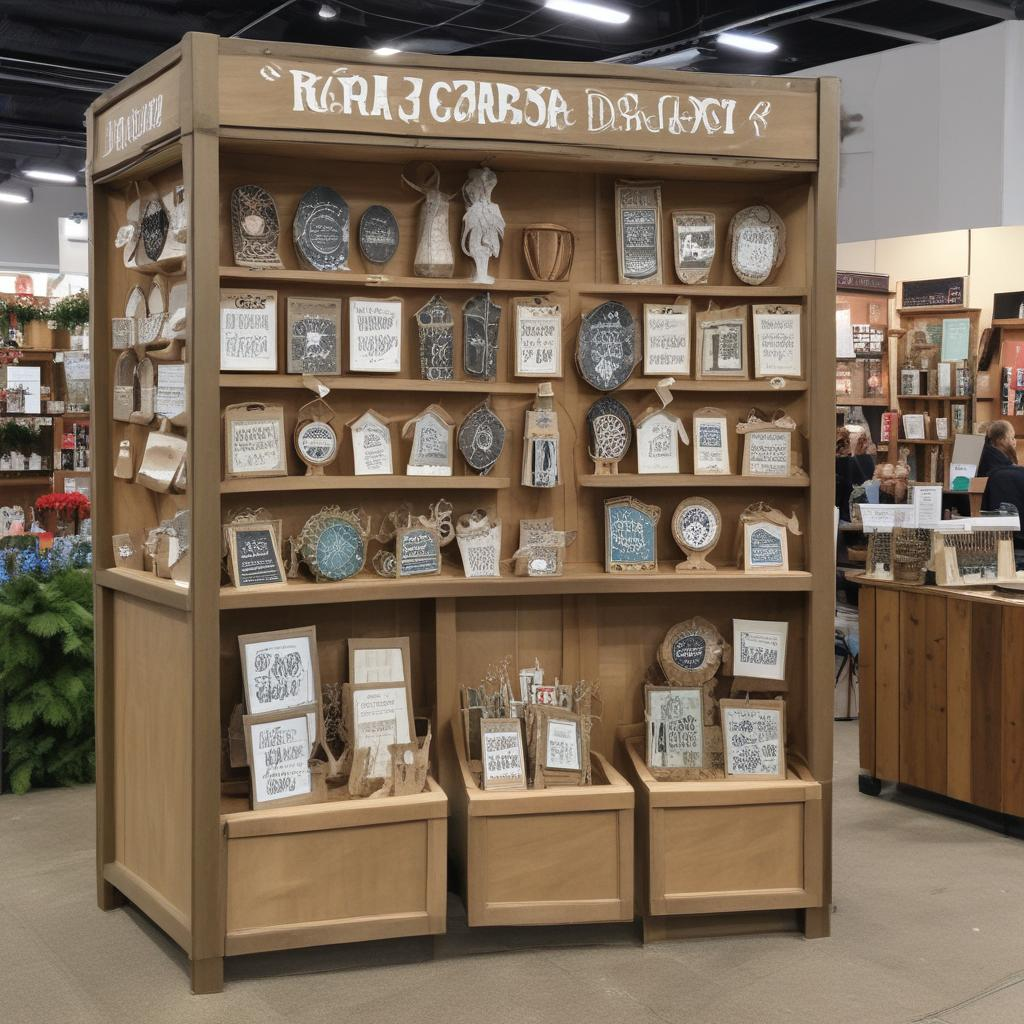The Seed of Creativity Blossoms at the Fair
It was a crisp, sunny morning when Sarah, a local artist, decided to participate in her first craft show. Nervous yet excited, she meticulously prepared her homemade jewelry, hoping her creations would catch the eye of passersby. Armed with nothing but a foldable table and her suitcase of shimmering trinkets, she felt woefully underprepared as she glanced at the elaborate displays around her. Throughout the day, Sarah observed a peculiar trend: booths with engaging setups attracted throngs of visitors, while less appealing ones, like hers, saw fewer. This observation sparked an epiphany for Sarah: the impact of a well-crafted display could be just as significant as the quality of the products offered.

Creating a Visually Appealing Craft Show Display
The importance of an aesthetically pleasing and functional display at craft shows cannot be overstated. The primary objective of your display is not only to showcase your products but to attract and engage visitors. Color coordination, lighting, and layout play pivotal roles in creating an inviting atmosphere. By choosing a color scheme that complements your products, you can set a mood that corresponds with your brand. Adequate lighting is crucial as it highlights your products’ best features and makes your booth stand out. A thoughtful layout that allows for easy movement encourages visitors to explore and interact with your products more freely.
Effective Use of Space
Making the most of the space available is vital. Regardless of the size of your booth, the goal is to maximize product visibility while avoiding clutter. A great tip is to use vertical displays to make use of airborne space, thereby increasing your display area without needing a larger footprint. Shelving units, hanging displays, and tiered tables are effective solutions for displaying more items without crowding your booth.
Interactive and Dynamic Elements
Incorporating interactive elements can significantly enhance the visitor experience. Interactive displays, such as demonstration areas where visitors can see or even participate in the creation process, add educational value and entertainment to your booth. Moreover, dynamic elements like rotating displays or multimedia presentations can draw attention and give your booth a modern edge. The key is to engage the senses of your visitors—let them touch, feel, and interact with both the products and the display itself.
Branding Consistency
Ensuring that all elements of your display align with your brand’s identity reinforces brand recognition and enhances the professional appearance of your booth. This includes consistent use of logos, color schemes, and thematic elements throughout your display materials. Consistency in branding builds trust and helps in creating a memorable impression on the craft show attendees.
Incorporating Feedback for Future Shows
As Sarah discovered during her first craft show, learning from the experience and the feedback of attendees and fellow vendors is invaluable. After the fair, she took the time to gather suggestions and observations that later helped her refine her display. Each show is an opportunity to experiment with new display ideas and refine existing setups based on direct feedback and personal observations.
Conclusion
A winning craft show display is not just about showcasing your products but creating an experience that resonates with the visitors. By focusing on aesthetic appeal, effective use of space, interactive and dynamic elements, and consistent branding, you can elevate your booth from merely a point of sale to a compelling visual and interactive story about your craft. Just like Sarah, every craft show exhibitor has the potential to turn their display into a magnet for engagement and sales, provided they pay attention to these crucial elements.


.jpg)






.jpg)



0 Comments